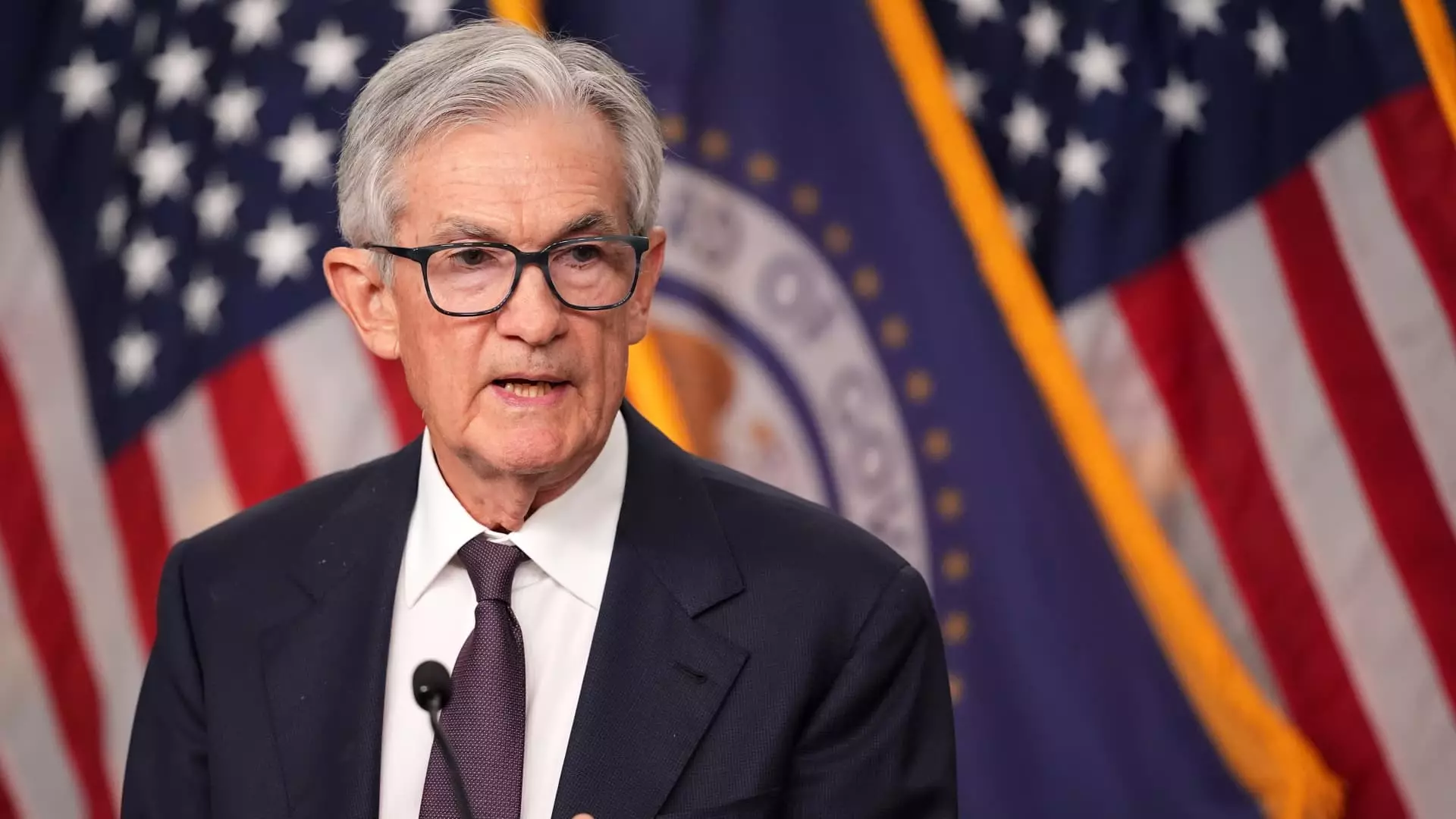The Federal Reserve has recently found itself navigating treacherous waters, caught between the dual pressures of inflation and the uncertain landscape of trade policy. In their latest meeting, Fed officials expressed deep worries that ongoing tariff disputes could exacerbate inflation, creating a complicated dilemma for their monetary policy framework. The minutes from the meeting on May 6-7 revealed a prevailing sentiment of caution among members of the Federal Open Market Committee (FOMC), who appeared increasingly concerned about the direction of fiscal policy and its cascading effects on economic growth. With rates on hold, the Fed faces an intricate balancing act, needing to legitimize their decisions amid mounting uncertainties.
The complexity of economic forecasting in the current climate is palpable. As officials probed the economic outlook, they acknowledged the likelihood of difficult trade-offs; rising inflation against a backdrop of stagnating growth could push the Fed into a corner, necessitating rate adjustments that could destabilize the economy further. Holding the benchmark federal funds rate steady at 4.25%-4.5% reflects a cautious outlook, yet it draws criticism for being a half-measure as economic indicators fluctuate wildly.
Consumer Spending: A Silver Lining?
Despite rising inflation worries and shifting complexities in trade, consumer spending remains a buoyant force in the economy. The recent assessments from the Federal Reserve indicate a solid labor market, leading to sustained consumption patterns. It’s a paradoxical state of affairs: while inflation looms, consumer resilience stands as a beacon of hope. Yet the question arises: how long can this consumer-driven momentum sustain itself amidst tariff-induced price hikes?
The labor market, as described by Fed officials, is “broadly in balance,” which might signal stability on the surface. However, if inflation proves stubborn, this “balance” could quickly turn precarious, prompting potential job cuts and weakened income stability. The reality facing policymakers is that while the consumer currently drives economic growth, any sudden shocks—be it tariff escalations or unforeseen geopolitical tensions—could disrupt this delicate equilibrium.
The Impact of Trade Policy: An Evolving Landscape
Trade policy has shifted dramatically in the aftermath of the Fed’s latest meeting. The recent thawing in relations between the U.S. and China, marked by the mutual decision to suspend the most damaging tariffs, initially appeared to alleviate market tensions. Wall Street responded with enthusiasm, indulging in a stock rally fueled by optimism for negotiation outcomes. However, these reactions may be short-lived; the capacity for tariffs to rebound or new trade barriers to emerge remains a lurking threat in the back of investors’ minds.
What is most troubling is the underlying uncertainty that envelops these trade negotiations. The Fed’s reluctance to alter interest rates until a clearer picture emerges from these discussions reflects not only their cautious approach but also a recognition that political turmoil does not merely affect markets; it shapes the broader economic context within which the Fed operates. A protracted trade dispute would undoubtedly complicate the Fed’s ability to meet its dual mandate of stable prices and maximum employment, further entrenching the risks involved in their wait-and-see economic strategy.
The Political Landscape: A Challenge for Central Bank Independence
In the midst of these economic challenges, the influence of politics on monetary policy remains an ongoing concern. Fed Chair Jerome Powell’s assertion that the bank won’t succumb to political pressures is commendable, yet it underscores a crucial struggle: central bank independence in an era of increasing political intervention. The incessant prodding from political figures demanding lower interest rates ignites fears of undermining the Fed’s credibility, further convoluting the pathway toward sustainable economic recovery.
The concept of “flexible average inflation targeting” was initially adopted in pursuit of more inclusive labor market outcomes; however, the current climate has called its efficacy into question. As policymakers grapple with inflationary shocks while maintaining the capacity to respond to a multitude of economic scenarios, the viability of such strategies comes under scrutiny. The notion that the Fed could allow for sustained inflation above its target could easily backfire, destabilizing an already fragile economy.
As the Federal Reserve stands at this critical juncture, it must employ robust and adaptive strategies to contend with the pressures of inflation, trade policy dilemmas, and political entanglements—all while striving to maintain its core mission. Without decisive action, it risks being ensnared in an intricate web of challenges that could reverberate through the economy for years to come.

Leave a Reply